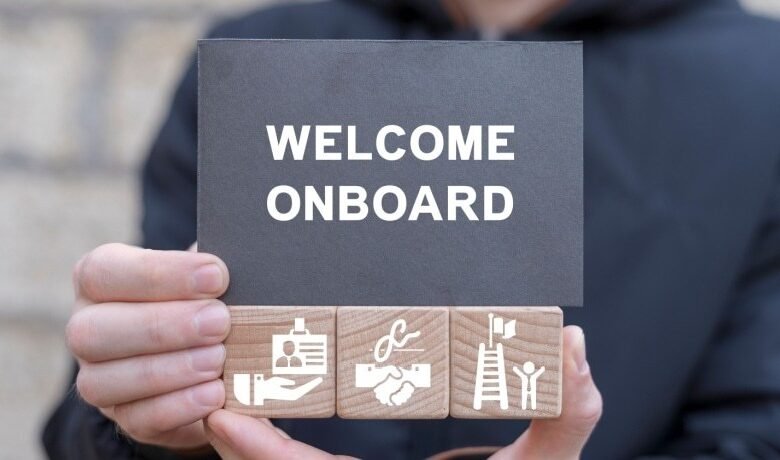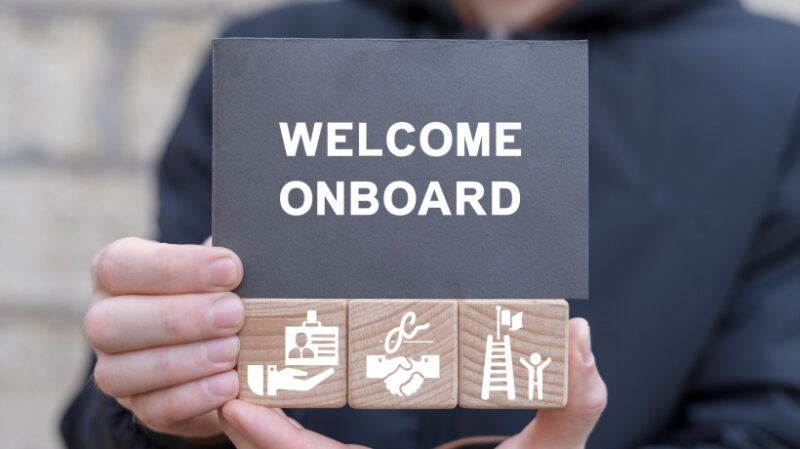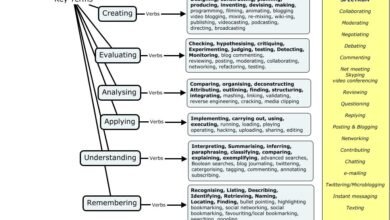What Is Preboarding And Why Does Your Organization Need It?


Employee Preboarding: Why It Matters And How To Get It Right
In a time when employment opportunities are abundant and potential employees are more skilled than ever, organizations are not having trouble finding talent but retaining it. An onboarding study from BambooHR shows that almost one in three employees quit within the first six months of employment, while almost 20% don’t make it past their first month. These numbers highlight that the employee experience during the initial stages of their employment is critical for their engagement down the road. This refers to your organization’s onboarding strategy, specifically the very first stage known as preboarding. This comprehensive guide will explore what preboarding is, how it differs from onboarding, and its importance. It will also provide tips and best practices to ensure its success.
What’s Inside This Guide…
What Is Preboarding?
Preboarding is best described as the first stage of the employee onboarding process. It typically spans the period between the new hire accepting the job offer and their actual first day at work. Preboarding has a few basic functions, the most important of which are getting as much administrative work done as possible before the first day, reducing first-day anxiety for newcomers, and preparing them for transitioning into their new work environment as smoothly as possible.
Preboarding Vs. Onboarding: The Key Differences
Before we get into the details of preboarding, it’s best to tackle the most common question: are preboarding and onboarding the same? If not, what are their key differences?
What is important to understand is that although they sound very similar, preboarding and onboarding are two distinct processes. Some may say that preboarding comes before onboarding or, as we mentioned earlier, that preboarding is the first stage of onboarding. Whichever of the two definitions you choose, it’s important to remember the two following timelines. Preboarding starts on the day the new hire accepts the job offer and ends on the first day of work, while onboarding spans the period between the first day of work and can go up to the first year of employment.
There are more differences between preboarding and onboarding, such as their focus. Preboarding focuses on initial engagement, preparation for the new work environment, and reducing first-day jitters. On the other hand, onboarding emphasizes general and role-specific training, smooth integration of new employees into the workforce, and speeding up productivity. In other words, preboarding fosters enthusiasm about the first day of work, while onboarding ensures long-term employee engagement and development by providing access to necessary tools, skills, and knowledge.
Why Is It Important For HR To Conduct Preboarding?
Preboarding is not simply a suggestion for a better employee experience. It is a strategic choice that businesses must make to streamline employee development and boost organizational success. Here are a few of the reasons why preboarding is an essential process.
Enhances Employee Engagement And Retention
Recruiting new employees requires significant resources and effort. Therefore, losing a new hire after only a few weeks or months will force you to start from scratch. To prevent that, make sure to foster an engaging preboarding experience during the early stage of your relationship with the new employee. This way, you will prevent them from experiencing new hires’ remorse or accepting counteroffers.
Boosts Early Productivity
Imagine this scenario: a new hire comes in, and all they do during their first days or weeks is fill in paperwork or wait for their company accounts to be activated. It’s easy to see how this approach puts their development and productivity on the back burner. Employee preboarding solves this problem by handling all preparation and administrative tasks before day one. This way, on the new hire’s first day in the office, they can hit the ground running, diving straight into the details of their new role and contributing meaningful work right away.
Strengthens Your Brand Image
An effective preboarding process is not only beneficial for your employees but also for your organization and the image it projects. Potential candidates are very interested in discovering businesses that are actively involved in creating a better welcoming experience for their employees and taking measures to ensure their long-term career development. Therefore, when you show your appreciation to existing and prospective employees through a well-crafted preboarding experience, your company becomes an attractive employer that easily draws in new talent.
Reduces Administrative Workload
While the number of administrative tasks that need to be completed when a new employee comes on board remains the same, preboarding can significantly streamline this process. Specifically, instead of scrambling to get everything sorted during the first few days of a person’s employment, preboarding makes it possible for these tasks to be spread out over several weeks. This approach enables your HR department to work through their checklists at a manageable and realistic pace, thus preventing errors and oversights.
Improves Cultural Alignment
The final reason why the HR department should be interested in implementing a successful preboarding experience is to protect company culture. By introducing new hires to the company’s core mission, vision, values, and culture, they set clear expectations from the get-go. As a result, when new employees are finally introduced to their teams and the rest of the company, they will have a better idea about how to behave themselves in order to achieve a strong cultural fit.
A Preboarding Checklist For HR Specialists
1. Sending Welcome Emails
Preboarding begins with a welcoming email to get new employees excited about their first day. Make sure to include important details like the start date, clock-in time, office address, and required paperwork. To set expectations, you may also provide a brief overview of company policies, such as the code of conduct and office environment handbooks.
2. Drafting The Onboarding Agenda For The First Day And Week
After completing the first step, it is time to prepare the agenda for the employee’s first day and week at work. The first day is dedicated to helping new hires familiarize themselves with their new workplace and colleagues. As a result, it usually starts with an office tour—a virtual one for remote employees—and an introduction to their closest colleagues, direct supervisor, and CEO. The rest of the week should focus on their new responsibilities and the company culture, with their training plan centering around compliance training and role-specific skills. Make sure to plan daily check-ins to optimize the onboarding experience.
3. Sending And Completing Pre-Employment Paperwork
An important part of preboarding is handling all paperwork before the new hire’s first day at work to save time, streamline HR tasks, and ensure compliance. Therefore, in the weeks following the acceptance of the job offer, gather all necessary documents, such as tax forms, benefits enrollment, employee contracts, etc., and send them to the new employee, preferably through a digital platform. Provide them with clear instructions and deadlines so that they fill in and return everything on time.
4. Prepare The Work Environment And Equipment
Coming into the office for the first time and finding their workspace ready for them can significantly improve the onboarding experience for new employees. This involves finding a clean and well-stocked workspace with a computer and office supplies waiting to be used. All new employee accounts must also be ready, allowing them to log in immediately. Regarding remote employees, HR should coordinate the shipment of necessary equipment a few days in advance.
5. Remind Managers To Inform The Team Of The New Hire
Don’t forget to inform the rest of the team about the arrival of a new member, as a warm welcome from them is also essential for a strong start. The HR department should remind the managers to introduce the new employee on their first day, either through an email or a team meeting, where they will share a few details about their role and background. This will encourage early interactions and help foster a positive and welcoming environment.
6. Help Draft A 30-60-90-Day Plan
It’s essential to create a clear roadmap for the first three months to set expectations and goals for the new employee. This will help achieve professional development and maintain alignment with organizational objectives. For that to happen successfully, the HR department must collaborate with managers to create a 30-60-90-day plan that outlines responsibilities, key milestones, and performance expectations. This will enable new employees to track their progress and know what is expected of them.
7. Be Available And Stay In Touch
The final object on your preboarding checklist is to ensure effective communication between new hires and their supervisors or the HR department. Make sure to schedule frequent meetings where new hires can ask questions, voice concerns, and discuss their progress. Additionally, clarify which communication channels they can use to reach out to colleagues or management for clarification or feedback between scheduled check-ups.
How Preboarding Makes Onboarding Easier
As the precursor of onboarding, preboarding can be particularly useful in paving the way for a smooth onboarding experience. Let’s see how.
Eases New Job Anxiety
Starting a new job can be stressful for employees, especially when they don’t know what to expect. Effective preboarding handles this issue by helping new hires familiarize themselves with company culture, team dynamics, and processes early on. This way, they feel more confident and comfortable on their first day instead of anxious and uncertain.
Fosters Relationships
Onboarding is designed to help new employees get to know their colleagues and foster relationships with them. Preboarding can facilitate this process by arranging early introductions and assigning a mentor or onboarding buddy with which new employees can interact before the first day. As a result, when new hires start working, they have already established connections that will make them feel comfortable.
Excites New Hires
It is essential to keep employees engaged between the job offer and the first day of work, as this is a period during which they easily change their minds. Preboarding can effectively maintain their enthusiasm about their decision to join your organization by sharing personalized welcome messages, company updates, and success stories.
Preboarding Tips To Improve The New Hire Experiences
How can you ensure that your preboarding process will be successful in helping new hires transition smoothly into their new role? Here are some essential preboarding tips to keep in mind.
1. Simplify The Process
Preboarding doesn’t have to be complex and overwhelming for new employees. On the contrary, it must only focus on basic processes and procedures that will help ensure a smooth onboarding experience later on. Therefore, assign only necessary tasks, such as completing mandatory paperwork, meeting immediate team members, and receiving a basic overview of their new role. Don’t forget to provide them with a point of contact for any questions they may have.
2. Set Expectations For The First Week
Successful preboarding requires taking things step by step. To reduce uncertainty and ease newcomer stress, you should let new hires know what their first week will look like. For example, you can share a calendar that outlines meetings with supervisors, team members, or other departments, as well as training sessions or any task they must complete by the end of the week. This will help them feel prepared for their new role and its responsibilities.
3. Introduce Your Company Culture
Preboarding is a great opportunity to introduce new employees to the company’s culture, values, and mission. This can be achieved by personalizing the various steps of preboarding through sharing success stories and welcome messages, gifting company swag, arranging casual meetings with other departments, etc. This will not only make these employees feel welcomed by the rest of the company but also facilitate their integration into the company culture.
4. Arrange Informal Meetings
The casual and informal meetups that we mentioned in the previous tip can and should start before the first day at work. More specifically, you can plan in-person or virtual coffee meetups, a buddy system, or informal welcome calls as part of the preboarding process. All of these steps will help employees feel more comfortable and establish early connections, which will make their integration into the company much easier.
5. Make It Engaging
If you want to prevent the enthusiasm of starting a new job from fading fast, you must take steps to make the preboarding process as engaging as possible. A great way to achieve this is to incorporate interactive elements, such as videos, quizzes, and gamification, at various stages of preboarding. These features will capture the attention of new employees and make the overall experience more enjoyable and impactful.
6. Plan Regular Check-Ins
New hires need to stay connected with their managers and mentors during preboarding to maintain communication and offer support. This doesn’t need to be more complicated than a simple email sharing your enthusiasm about welcoming them on board or a virtual meeting where you can get to know each other and urge the new employee to express any questions or concerns they have about their new job.
7. Don’t Delay Preboarding
Preboarding needs to start as soon as the candidate accepts the job offer. If you wait and leave preboarding tasks for the last week before starting work, you risk losing your new hire’s initial interest and excitement. Spread out the tasks you need to do, such as filling in paperwork or reading through essential company information, to achieve a smooth introduction to the company without overwhelming or under-engaging new hires.
8. Address Concerns Early On
Starting a new job may be exciting, but it also comes with a certain level of stress and uncertainty. Help new hires combat these feelings and start their new job prepared and confident by creating a preboarding strategy that explains everything they need to know before their first day, describes processes and expectations, and provides a reliable point of contact that they can reach out to for additional clarifications.
9. Leverage Digital Tools
We’ve already mentioned incorporating tech tools into your preboarding process to maximize employee engagement. However, leveraging technology can also have a particularly positive effect on the efficiency of preboarding. HR software, online learning platforms, and digital communication tools can help streamline the various stages of onboarding and ensure a seamless and pleasant experience for newcomers.
10. Customize The Preboarding Experience
Preboarding should be tailored to the specific needs of each employee entering your organization. In particular, it is essential to personalize the process based on the new hire’s position, job level, and overall learning preferences. Providing new hires with training resources and materials that align with their unique circumstances will not only make them feel valued but also enhance their development and productivity.
11. Gather Feedback And Continuously Improve
Once the new hire starts working in your organization, you must gather feedback regarding the preboarding process they just experienced. Ask them whether it prepared them adequately for their new work environment, what their favorite part was, and what they think could be improved. These insights will help you refine your organization’s preboarding strategy and improve it for future hires.
Common Preboarding Mistakes To Avoid
Finally, let’s look at three common preboarding mistakes you need to be wary of to achieve the best results possible.
Inadequate Communication
The biggest mistake you can make during preboarding is failing to maintain communication with your future team members. If new hires don’t hear from you in the weeks following their acceptance of the job offer, they might start questioning their decision to join your organization. This can ultimately lead to disengagement and may even push them to accept an offer from a competitor. Prevent this less-from-ideal scenario from happening by sending them regular updates, arranging quick and informal meetups with their supervisor or team, and giving them opportunities to ask questions. This way, they will remain excited about this new step in their career and turn up on their first day feeling prepared and positive.
Information Overload
Understandably, there might be a large amount of information you want to present to new hires during the preboarding stage. However, bombarding them with training resources, employee handbooks, compliance policies, and paperwork all at once may have adverse effects, such as stress and confusion. Instead, consider spacing out the preboarding tasks and focusing only on what is absolutely necessary for new hires. For example, start with the mandatory paperwork and the specifics of their role, and leave additional information about the company culture or the setup of their internal accounts for the following days. This approach will make preboarding more manageable, allowing new hires to comprehend and complete one task before moving on to the next.
Lack Of Personalization
Last but not least, companies need to remember that not all hires are the same. Depending on their previous experience, age, job role, working style, and learning preferences, each hire might require a different approach during preboarding. For instance, technical roles may require more support from your IT department, while managerial roles could benefit from leadership courses. Additionally, you might have to modify preboarding to address the needs of employees who will be working exclusively remotely versus those working on-site. Personalizing any messages you send to new hires, modifying their training plans to align with their strengths and weaknesses, and providing them with mentors who can make a difference in their performance are all steps that will make your new hires feel appreciated and valued for their unique skills.
To Sum Up
Despite its great significance, it seems that preboarding has not yet gained the same level of attention as onboarding. However, designing and implementing a comprehensive preboarding strategy can greatly impact a new hire’s experience, engagement, and subsequent development and long-term success. In this detailed guide about preboarding, we discussed everything that you need to know about it, including the factors that set it apart from onboarding, its advantages, and best practices to ensure its success. Create your own preboarding strategy today to attract and retain new talent, reduce their time to productivity, and effectively integrate them into your company culture.




